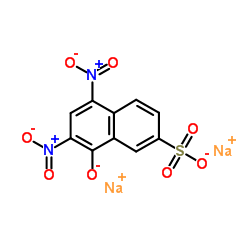Influence of inorganic salts on the staining reaction of eosinophil leukocyte granules by anionic dyes.
C Isabel Trigoso, P Del Castillo, J Carlos Stockert
Index: Acta Histochem. 93(1) , 313-8, (1992)
Full Text: HTML
Abstract
The use of salts as competing agents in staining solutions allows to evaluate to what extent ionic interactions take place between microscopical substrates and cationic or anionic dyes. We have employed this method to study the staining reaction of horse eosinophil leucocyte granules by the anionic dyes nuclear fast red, naphthol yellow S, eosin Y, indigocarmin, acid fuchsin, alizarin red S, orange G, and Evans blue in the presence of NaCl (from 0.015 to 2 mol/l). Different values of "minimal electrolyte concentration" (the least amount of salt which reduces the staining intensity) were found for these dyes. Comparative observations using ammonium sulphate as competing salt showed that it is less effective than NaCl. Staining of eosinophil granules by anionic dyes could be not suppressed at 2 mol/l NaCl, which indicates that in addition to electrostatic forces, other non-ionic interactions are also responsible for some staining reaction of these acidophilic structures.
Related Compounds
| Structure | Name/CAS No. | Molecular Formula | Articles |
|---|---|---|---|
 |
Citronin A
CAS:846-70-8 |
C10H4N2Na2O8S |
|
Determination of the fraction of G0 cells in cytologic sampl...
1983-03-01 [Anal. Quant. Cytol. 5(1) , 1-4, (1983)] |
|
Location of naphthol yellow-S binding site on bovine serum a...
1981-11-01 [J. Pharmacobiodyn. 4(11) , 851-9, (1981)] |
|
"In situ"--measurements of protein contents in the brush bor...
1981-01-01 [Histochemistry 72(3) , 467-79, (1981)] |
|
Quantitative cytochemical differences between young and old ...
1985-12-01 [Chest 88(6) , 864-9, (1985)] |
|
Quantification of nuclear non-histone proteins by Feulgen--N...
1981-09-01 [Histochem. J. 13(5) , 717-22, (1981)] |